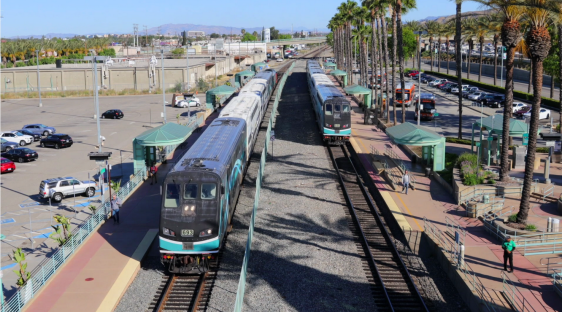The conservative "tea party" movement, last seen complaining
about the government-funded local transit system that they took during
an anti-government march in Washington D.C, is veering back to form in
Florida with an organized protest against the state's proposal for
broad new investments in rail transit.
 The "Tea Party" is now a registered political party in Florida. (Photo: CBS)
The "Tea Party" is now a registered political party in Florida. (Photo: CBS)The Florida chapter of Americans for Prosperity (AFP), one of three national conservative groups driving the "tea party" effort, has asked its members to protest on Monday in Tallahassee.
The date coincides with an anticipated state House vote on rail legislation with multiple goals: setting up guaranteed funding for South Florida's popular but cash-strapped
Tri-Rail, authorizing a similar commuter network called SunRail in
Central Florida, and creating two new agencies to oversee a potential
state-wide high-speed rail system.
The Orlando Sentinel reported a statement from Adam Guillette, director of AFP in Florida:
Thistrain boondoggle is the wrong proposal at the wrong time. Ourlegislature should focus on ways to cut wasteful spending, not increaseit!
According to the Sentinel, AFP's anti-rail
protest is set to feature a high-profile guest: state senator and GOP
gubernatorial hopeful Paula Dockery, who helped kill an earlier incarnation of the Florida commuter rail plan in 2008.
Dockery
describes herself as a rail proponent, but claims that the current
legislation would generate excessive profits for CSX, the freight
company that controls more than 60 miles of rail tracks slated for purchase
by the state. Still, her rhetorical approach to attacking the Florida
rail bill appears straight out of Washington's pro-roads playbook.
The Miami Herald yesterday transcribed the following exchange between Dockery and fellow state senators who support the rail plan:
Dockery: In 2008, Tri-Rail brought in $9 million. What was the operating deficit that local governments needed to make up?
Sen. Jeremy Ring: I believe government needed to make up $46 million. The wholeoperating impact was $57 million. Mr. Chair, I have a question: I wouldlike to know where we’re going with this? Roads cost money as well. Mr.Chair, I just don’t know where we’re going. This is not a quiz. This isnot a multiple-choice quiz. ...
Dockery: Mr. Chairman, you are selling this bill on creating jobsand economic development. And I’m asking questions to show that our oneand only existing rail service not only did not create a lot of jobs,but also is operating at a deficit 20 years later with a 15,000ridership -- whereas the system that you’re trying to build now onlyhas an estimated 3,500 ridership.
Dockery won praise
from the Herald for her rail knowledge, but her data on SunRail
ridership projections was incorrect; the Federal Transit Administration
(FTA) estimates
that opening-day ridership on the Central Florida system would reach
4,300. In addition, FTA models for predicting light rail ridership have proven unreliably low in Phoenix, Minneapolis, and Houston.




